Uterine Cancer
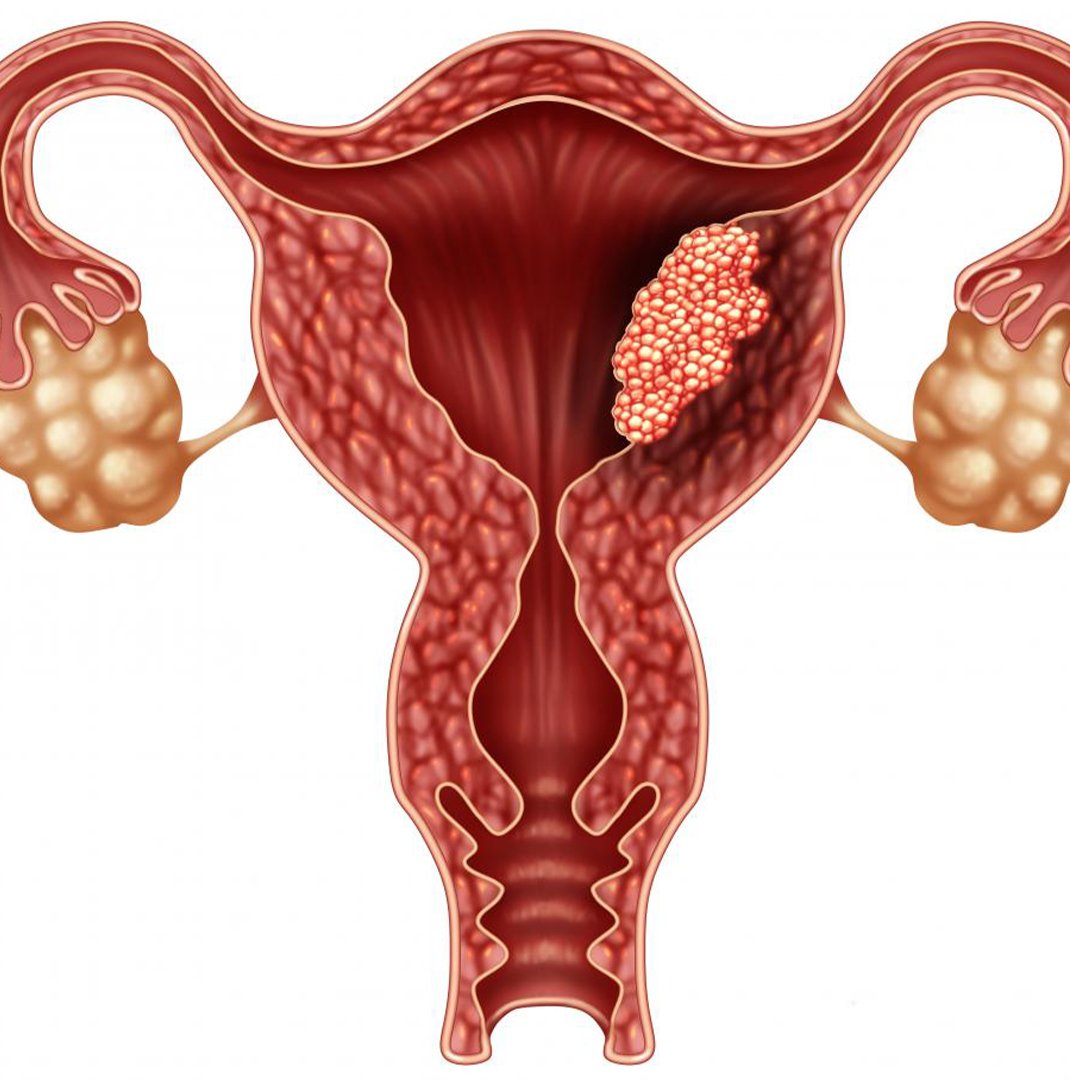
What is Uterine Cancer: Symptoms, Types, Treatment Options and Outcomes in India
Uterine cancer, often called endometrial cancer, usually hits women post-menopause. Beginning in the uterine lining, it might bring about changes like unusual vaginal bleeding, pain in the pelvis, and pee problems. Usual risk factors are hormonal imbalance and excess of estrogen due to common problems like PCOS, being overweight, hormone replacement therapy and your family's medical past. This cancer evolves in stages, from basic to advanced, this affects the possible treatment options such as surgery, radiation procedures, and chemotherapy. India shines in the field of uterine cancer treatment, offering advanced medical help at a budget-friendly cost. It attracts people worldwide looking for high-quality, affordable health options
Book an Appointment
What is Uterine Cancer or Endometrial Cancer?
Uterine cancer begins in a woman's womb or the uterus. This vital organ carries the growing baby within her during pregnancy. Most of these cancers originate from the inner lining of the uterus, known as the endometrium. Hence, they are often termed "endometrial cancer." Few cases also originate from the muscles of the womb and preexisting fibroids and they are commonly known as sarcomas.
Imagine unusual cells growing fast in the womb, creating tumors. Without treatment, these harmful cells could travel to different body parts. They might reach areas such as the lymph nodes, ovaries, or distant places like lungs or liver
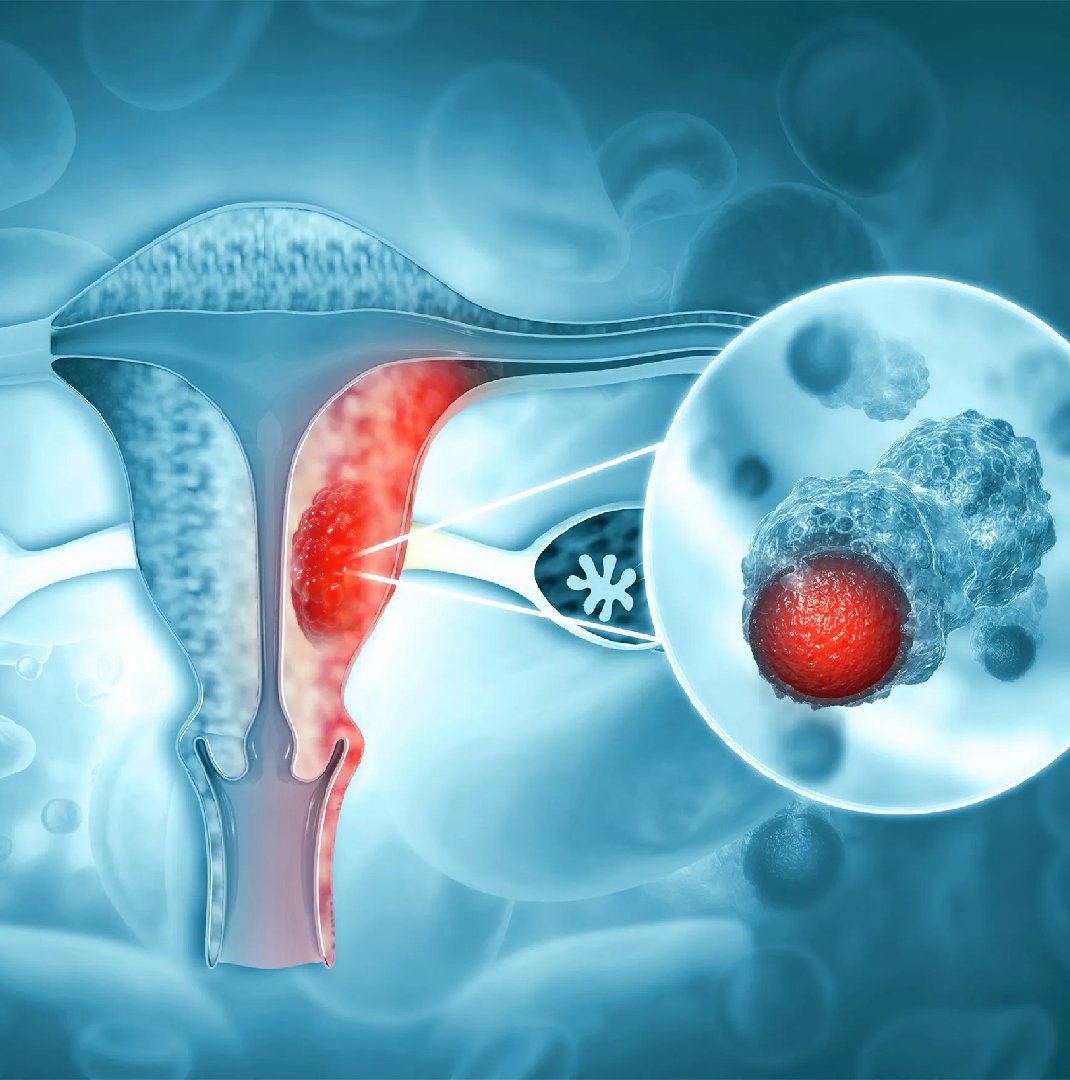
Key Facts about Uterine Cancer
- Uterine cancer tops the list of gynecologic cancers and is increasing day by day due to an increase in diet and lifestyle related risk factors.
- Women above 50 primarily get it. However due to an increase in PCOS cases, it could be found in young women as well.
- Catching it early and treating it leads to high chances of living without the disease.
Types of Uterine Cancer
- Endometrioid Endometrial Carcinoma:
- This cancer constitutes over 90% of uterine cancer cases.
- Its starting point is the endometrial lining.
- If detected and treated early, it is highly curable.
- Uterine Sarcoma:
- An unusual, harsher kind of cancer.
- It starts in the uterus's muscles or tissues that link parts together.
- Leiomyosarcoma and endometrial stromal sarcoma are a couple examples of this.
- Outcomes depend on timely and proper management.
- Clear Cell, Carcinosarcoma, Undifferentiated and Papillary Serous Carcinomas:
- These are hard-hitting forms of womb cancer.
- Often show up at a late stage and call for strong therapy using multiple modalities.
What are the Uterine Cancer Symptoms and Causes?
Symptoms of Uterine Cancer
Early signs of uterine cancer can show up, making it simpler to spot and manage in the beginning. Usual symptoms include:
- Abnormal Vaginal Bleeding: In older women, this is the main symptom and should never be ignored.
- Pelvic Pain: Regular ache or heaviness in the lower belly or pelvic area.
- Unusual Vaginal Discharge: Can be watery or bloody and might smell bad.
- Pain During Intercourse: Could suggest other hidden issues.
- Frequent Urination: Might be paired with pain or a hot feeling while passing urine.
- Fatigue and Weight Loss: Later stages could lead to unexpected weight loss and serious tiredness.
Causes of Uterine Cancer
Uterine cancer can be a puzzle. Several factors could spike its risk. Let's take a look:
- Hormonal Imbalances: When there's too much estrogen and not enough progesterone, your endometrial lining gets overworked and thickened. This can lead to cancer if not recognised and managed early.
- Obesity: More fat cells mean more estrogen and a higher chance of getting this cancer.
- Genetic Mutations: Certain gene mutations, like MLH1, MSH2, MSH6, PMS2 (Lynch Syndrome), could put you at risk for hereditary uterine cancer. These cancers usually occur in younger age groups and occasionally there is a family history of bowel or uterine cancer.
- Lifestyle Factors: Smoking, unhealthy eating, and no exercise can invite trouble.
- Family History: If your family has a history of uterine or colon cancer, watch out!
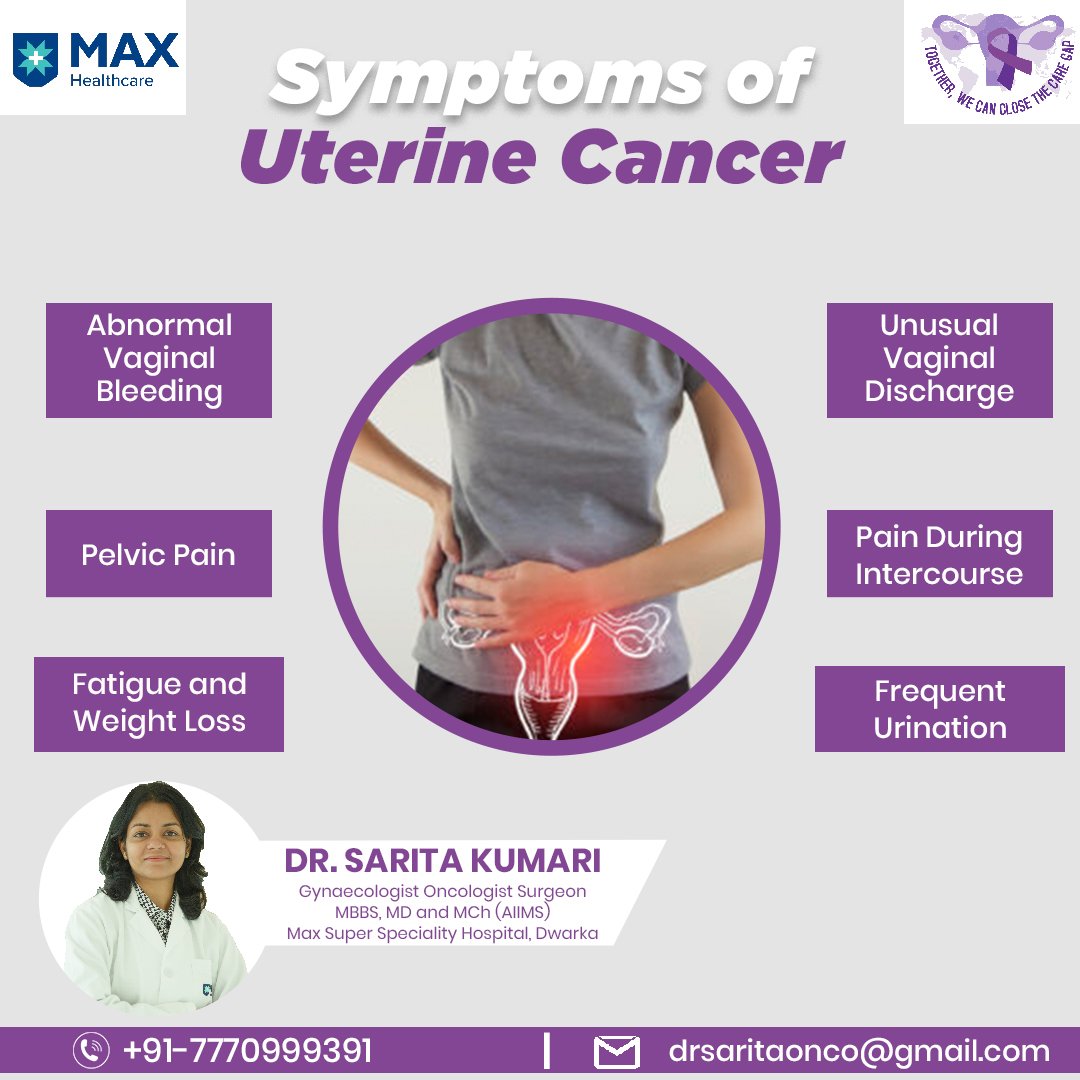
Book an Appointment
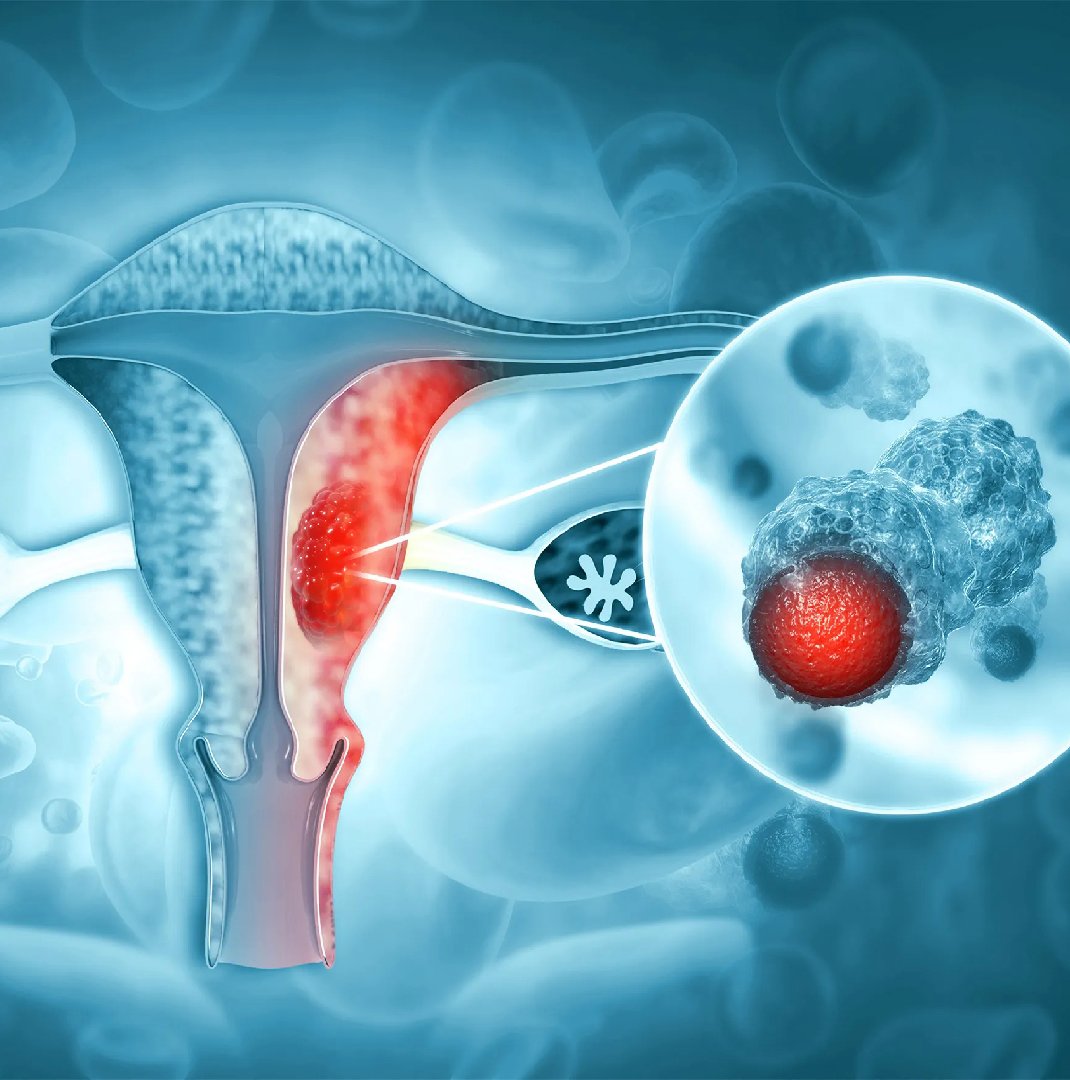
Molecular Markers in Uterus Cancer
In recent years a lot of research has been done on the molecular makeup of endometrial cancers and overall they have revealed four distinct groups of cancers. These groups are:
1) POLE mutated
2) P53 mutated
3) MMR deficient and
4) NSMP (no specific molecular profile) tumors.
POLE mutated tumors have the best outcomes after surgery alone whereas P53 mutated tumors require surgery, chemotherapy as well as radiation to achieve good outcomes. MMR deficient tumors may have a genetic basis and they usually require a genetic testing and outcomes are somewhere between POLE and P53 mutated tumors with surgery and immunotherapy. NSMP has no specific molecular profile and they also have an intermediate outcome. Knowing the molecular profile of endometrial cancer greatly helps in knowing the future prognosis.
Treatment of Uterus Cancer in India
Treatment of Uterine Cancer is best in the hands of trained Gynaecologic Oncologists or Gynae Onco Surgeons. They utilize modern technology and surgical precision. Treatment plans align with the cancer's progress and the needs of the patient.
- Surgery:
- Usually, the starting point is surgery. It focuses on hysterectomy, taking out the uterus, ovaries, and tubes. India offers surgeries that are minimally invasive, like the laparoscopic and robotic ones. These lessen pain, cut hospital stay time, and quicken healing. A minimally invasive surgery is favored when the disease is early. Along with hysterectomy, a lymph node assessment is performed in all cases which is known as sentinel lymph node mapping. It lets you know the disease stage. The expertise of performing a proper sentinel node mapping is available with trained gynae onco surgeons. In a few cases, an omental biopsy is also performed depending on the type of tumor. In cases where the tumor has spread beyond the uterus an open surgery is performed by giving a cut in the abdomen. In advanced cases where tumor or disease is inoperable or in patients who are poor candidates for surgery, 3-4 cycles of chemotherapy or radiation is given first to decrease the burden of tumor and enable surgical debulking of tumor.
- Radiation Therapy:
- Radiation therapy helps make tumors smaller for surgery or wipes out any cancerous cells left after surgery. There are choices like external beam radiation and brachytherapy. Brachytherapy is a type of internal radiation that accurately hits cancer cells. The decision for radiation after surgery is made based on the stage of tumor on surgical pathology specimen and molecular profile of tumor.
- Chemotherapy:
- Chemotherapy uses strong medications to fight off cancer cells, primarily in severe stages or situations where the disease has spread. It's generally paired with additional treatments for the best results.
- Hormone Therapy:
- Hormone therapy helps manage cancers sensitive to hormones. This option benefits individuals who, due to health reasons or age, cannot undertake surgery or in cases where tumor has come back.
- Targeted Therapy:
- This innovative approach uses medications to target particular proteins or gene alterations that fuel cancer cell growth. It's often utilized for repeated or advanced cancers.
6. Immunotherapy:
- These are newer drugs which help our body fight against the tumor by building immunity against it. They have fewer side effects than chemotherapy. Your gynaecologic oncologist will assess whether you are eligible for these drugs based on the molecular profile and tumor stage.
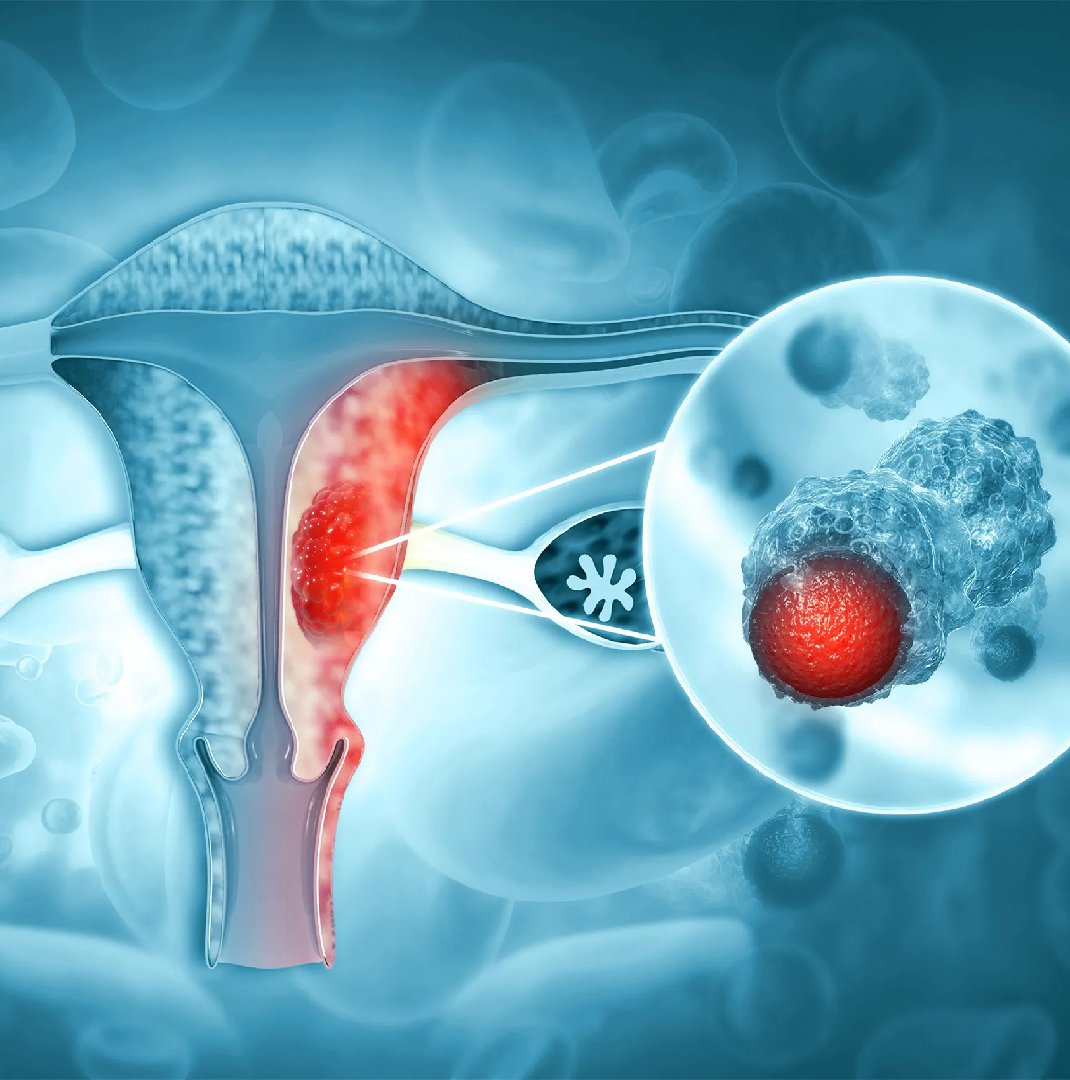
Recovery from Uterine Cancer Surgery
Healing time post uterine cancer surgery is dependent on the type of surgery and one's overall health. Correct care after surgery is vital for steady and smooth recovery.
- Hospital Stay: Patients undergoing a staging surgery for endometrial cancer generally remain in the hospital for 3 to 5 days. This allows healthcare providers to monitor recovery and manage any immediate complications.
- Physical Recovery: Complete physical recovery typically takes 4 to 6 weeks, depending on whether the surgery was open or minimally invasive. Patients may experience temporary discomfort, fatigue, or abdominal swelling during this period.
- Post-Surgical Care: Doctors suggest that patients steer clear of serious labor, intense actions, and operating vehicles until they get the green light. Eating a well-balanced meal filled with vitamins and minerals promotes healing, and drinking lots of water helps with mending. Consistent visits to the medical team checks if there are troubles or signs of resurfacing issues.
- Emotional Recovery: Cancer surgery often leaves a strong emotional print. Having loved ones by your side is key to dealing with these feelings. Talking to a counselor or joining a support group can also aid in managing worry, sadness, or fears of the cancer returning.
Book an Appointment
Preventing Uterine Cancer
Uterine cancer may not be completely stoppable. Yet, choosing to live healthy and handle risks well can cut down the odds of the disease showing up.
Stay fit through daily workouts and eat right. Tackling hormonal swings with tools like combined estrogen and progesterone can help. Also, keeping a check on disorders like diabetes and PCOS can cut down risks.
Having routine lady-doctor checks, talking to a genetic expert if you have a family who had womb or colon cancer, and not smoking or drinking too much are key to staying healthy.
Stay aware! Noticing symptoms early and taking immediate action can catch the disease at the beginning. This means your treatment could work better
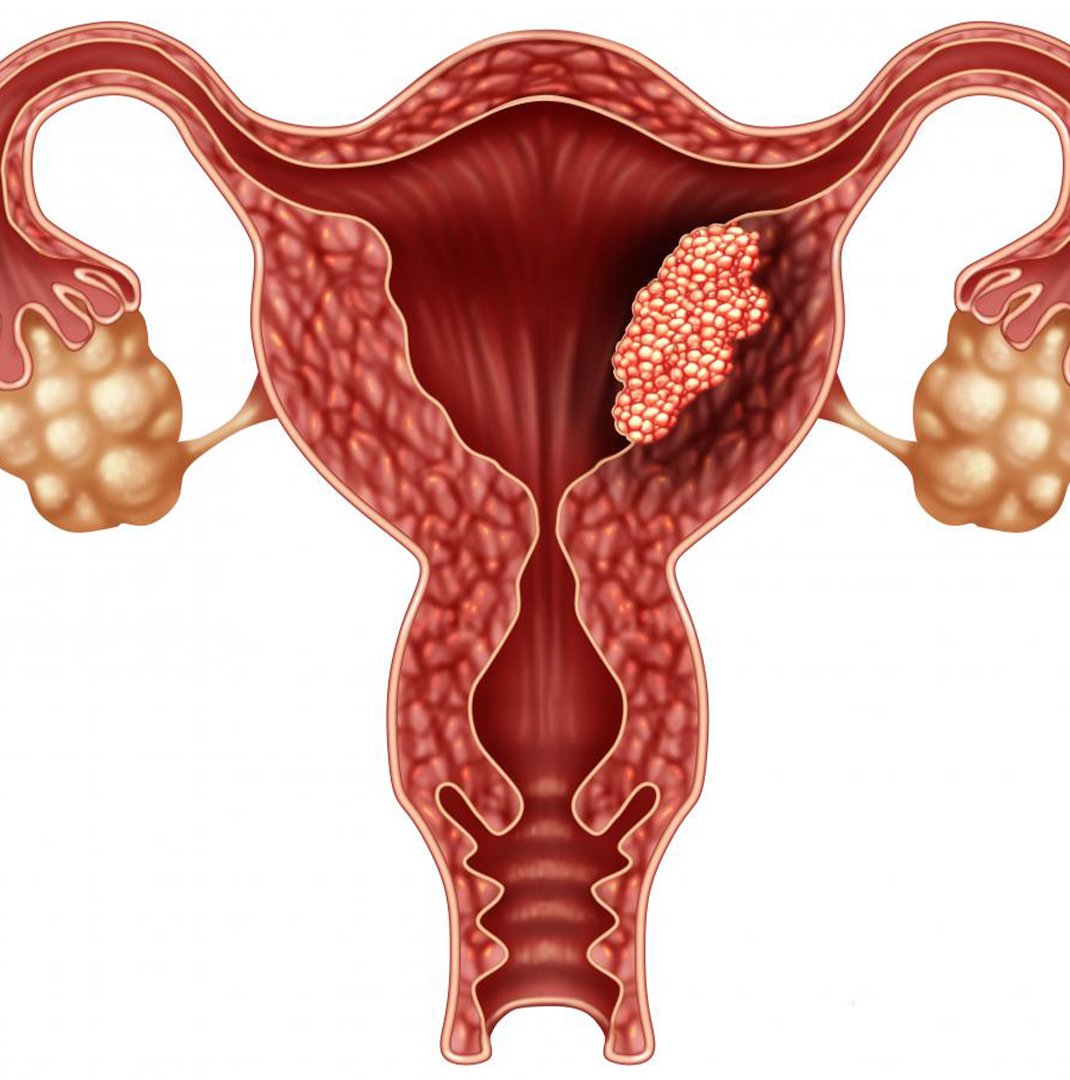

Why Choose Dr. Sarita for Uterine Cancer Surgery?
Dr. Sarita Kumari is a renowned expert in uterine cancer treatment with exceptional credentials and a patient-first approach.
- Outstanding Qualifications
Dr. Kumari has an MBBS, MD, and MCh from AIIMS, in New Delhi. It's the top-shelf medical school in India. She's also got experience in gynecologic oncology, and she did that right at the National Cancer Institute, again at AIIMS. She has been at several International oncology centers to learn specific skills. It really strengthened her skills.
- Extensive Experience
For over multiple years, Dr. Sarita Kumari effectively handled many uterine cancer cases, ranging from the initial discovery to more developed phases. Currently practicing at MAX Hospital, Dwarka, New Delhi.
- Master of Advanced Techniques
She excels in doing robotic and laparoscopic surgeries. These methods are not as harsh as others, which helps patients recover quicker. There's also less pain and barely any scars.
- Holistic Care Approach
Dr. Sarita Kumari looks at both physical and emotional parts for cancer care. She makes personal treatment plans matching every patient's special needs.
- Proven Success
She consistently shines with her successful treatment of difficult uterine cancer cases. This success garners her wide acknowledgement.
- Compassionate Care
Dr. Sarita Kumari's friendly nature and focus on the patient make the treatment journey smoother and more comforting, it makes her the best doctor for uterus cancer in India.
When you choose Dr. Sarita Kumari, you're picking a top professional who presents advanced treatment and genuine care for uterine cancer patients. If you're on the quest for great uterine cancer treatment imbued with kindness and modern techniques, look no further than Dr. Sarita Kumari. For more details about uterine cancer surgery, contact us now
Diagnosis of Uterine Cancer
Detecting uterine cancer at an early stage is highly important. It allows for successful treatment and improves health results. Medical professionals utilize a mix of assessments, scans, and lab tests to identify cancer and its severity.
Medical History and Physical Examination
Starting to figure out what's wrong begins by understanding the person's health history and any unusual signs. Weird periods, stomach aches, or a shift in monthly cycle could all be clues. A health check is done to see if anything in the belly or nearby isn't quite right.
Transvaginal Ultrasound
Usually, this is the starting point for imaging tests. A tiny tool or ultrasound probe is put inside the vagina. This enables them to take clear pictures of the uterus and ovaries. It's useful for spotting strange things in the endometrial lining or picking up growths. This can help catch problems early.
Endometrial Biopsy
Here's the surefire test for uterine cancer. They take a tiny sample of the uterine lining. A microscopic examination helps them spot any cancerous cells. Even though it's minor surgery, it offers vital data to shed light on your health.
Hysteroscopy
When deeper investigation is needed based on ultrasound findings, a hysteroscopy might be the answer. This process involves a lighted scope or camera going into the uterus. It's for looking at the lining and getting tissue samples for more study. It is particularly advantageous in postmenopausal women.
Imaging Tests
CT scans, MRIs, and PET scans help check if cancer has gone past the uterus. These tests assist in figuring out the disease stage and mapping treatment.
Blood Tests
Blood checks, like cancer identifiers or tumour markers like CA125, offer more knowledge and gauge your general wellbeing before treatment starts.
Early spotting of uterine cancer paves the way for fast treatment and personally-tailored care plans, which greatly boosts healing and survival odds. Any woman with signs and symptoms should quickly reach out to healthcare professionals.
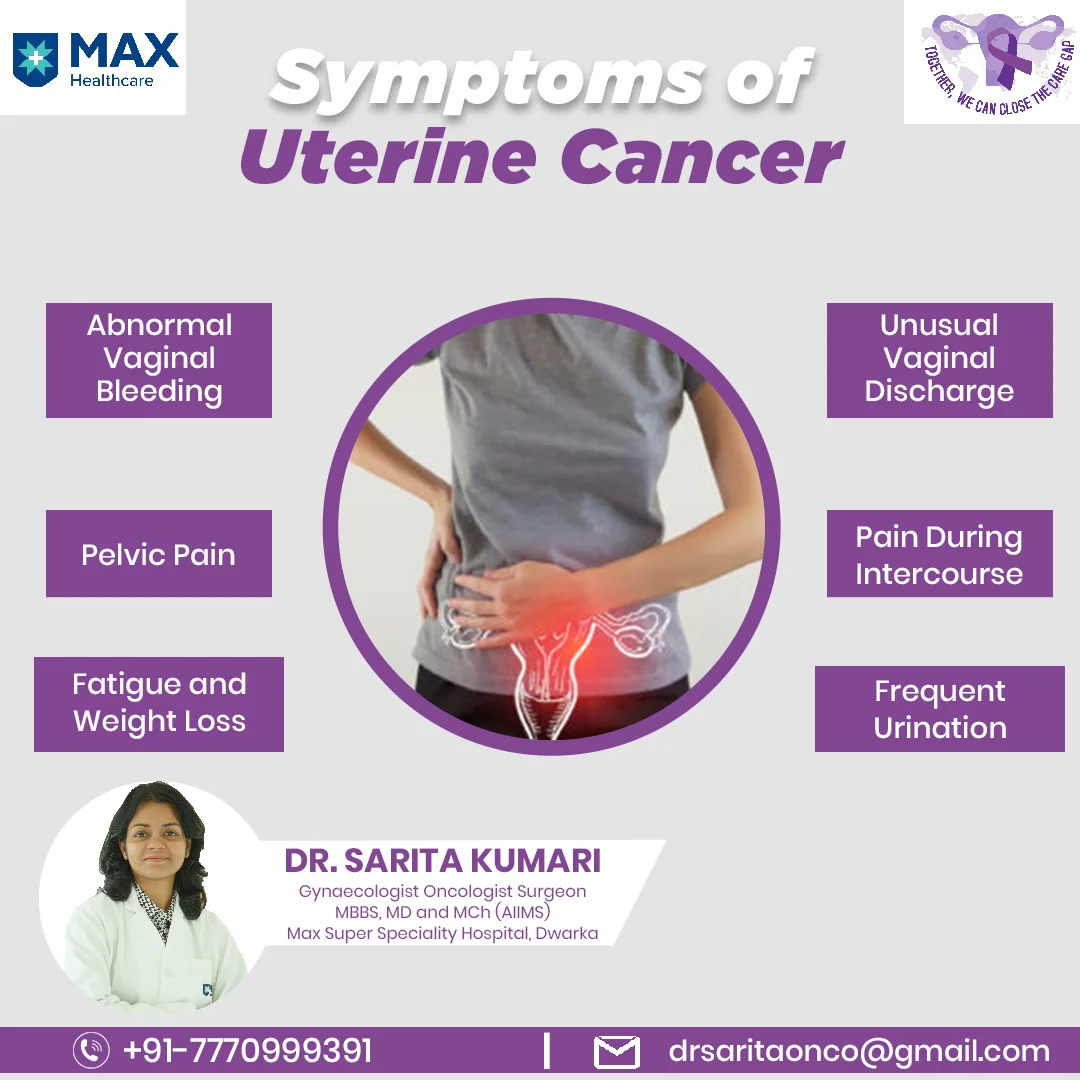
Book an Appointment
Stages of Uterine Cancer
Uterine cancer grows and spreads in four steps:
- Stage I:
- Here, the cancer is only in the uterus.
- Subdivided into:
- IA: Here, the cancer is either only in the endometrium or less than half of the myometrium.
- IB: This is when more than half of the myometrium has cancer.
- Stage II:
- At this stage, the cancer has extended to the cervical stroma, but is still trapped within the uterus.
- Stage III:
- Now, the cancer has grown out of the uterus, reaching close structures such as the ovaries, vagina, or lymph nodes.
- Stage IV:
- In this final stage, the cancer has traveled to far-off organs. This can include the bladder, rectum, or lungs.
Each growth step needs its own treatment design, decided based on the extent and intensity of the disease


